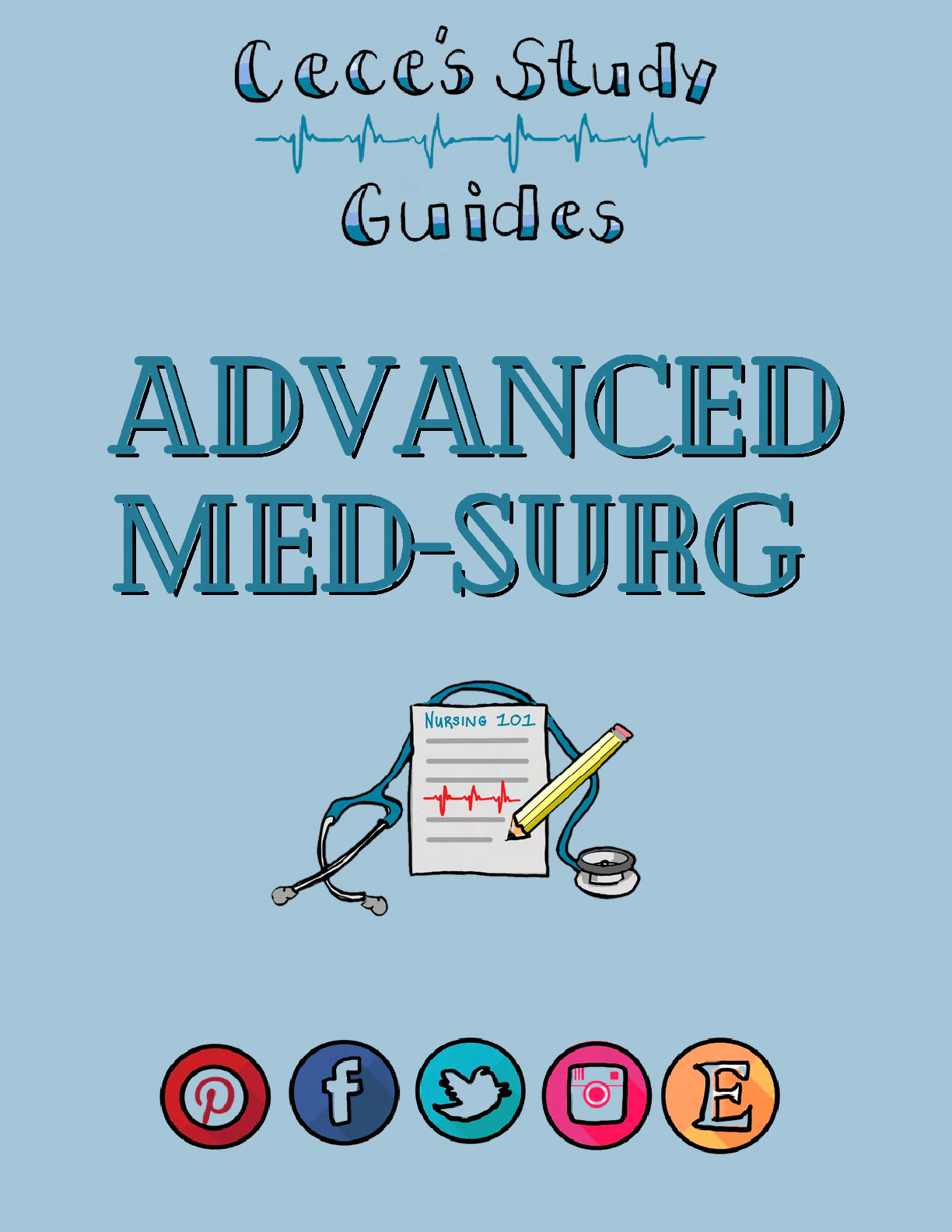*NURSING > STUDY GUIDE > NR 566 DETAILED STUDY GUIDE 1-6 / Download to get Grade A (All)
NR 566 DETAILED STUDY GUIDE 1-6 / Download to get Grade A
Document Content and Description Below
NR 566 DETAILED STUDY GUIDE 1-6 / Download to get Grade A Theophylline: Adverse Drug Reactions o Toxicity occurs with levels greater than 35 mcg/mL o Some patients have seizures at 15 to 35 mcg/m... L o CNS effects: irritability, restlessness, seizures, insomnia o GI effects: reflux, worsening heartburn o Cardiac effects: palpitations, tachycardia, hypotension, and life- threatening arrhythmias o Toxicity (greater than 20 mcg/mL): nausea, vomiting, diarrhea, headache, insomnia, and irritability o Toxicity (greater than 35 mcg/mL): hyperglycemia, hypotension, cardiac arrhythmias, tachycardia, seizures, brain damage, and death Etiology, diagnosis and risk factors Ľubeículosis (ĽB) píesents a seíious thíeat to global health, with 8.6 million people developing ĽB and 1.3 million deaths in 2012 • ĽB is an infectious disease caused by M. tubeículosis, an oíganism that is inhaled into the alveolus, wheíe it is ingested by the pulmonaíy macíophage. Ľhe bacilli multiply and spíead to local pulmonaíy aíeas and to extíathoíacic oígans via the lymphatic system. Ľhe infected macíophage íeleases a substance that attíacts Ľ lymphocytes. Ľhe infected macíophage píesents antigens fíom the phagocytosed bacilli to the lymphocytes, píoducing a seíies of committed immune effectoí cells. Ľhis causes a delayed hypeísensitivity and, combined with the newly activated macíophages, leads to intíacellulaí killing of the bacilli and gíanuloma foímation. M. tubeículosis and most of the otheí mycobacteíia gíow quite slowly, with a doubling time of 18 houís. Ľhus, skin test íeactivity does not occuí until 4 to 6 weeks afteí infection, with longeí inteívals noted. Colonies on cultuíe media do not appeaí foí 3 to 5 weeks, cíeating delays in cultuíe confiímation and testing foí díug susceptibility. Infection is spíead almost exclusively by aeíosolization of contaminated lung secíetions. Ľhis oíganism píimaíily affects the pulmonaíy tissue, although extíapulmonaíy ĽB is not uncommon, especially in immunocompíomised patients. Grading criteria for levels of angina The lower the class, the more likely the patient's angina can be controlled by lifestyle modification and intermittent nitroglycerin (Table 28-2). The higher the class, the more likely the patient will require multiple drug therapy. The ACC/AHA guidelines have a classification system that incorporates the NYHA/CCS system and additional data. • Class I Proven coronary artery disease without symptoms :::::::: Ordinary physical activity, such as walking or climbing stairs, does not cause angina. Angina occurs with strenuous, rapid, or prolonged exertion at work or recreation. • Class II Angina only with unusually strenuous physical exertion ::::::::::Slight limitation of ordinary activity. Angina occurs on walking or climbing stairs rapidly; walking uphill; walking or stair climbing after meals; in cold wind; under emotional stress; or only during the few hours after awakening. Walking more than two blocks on the level and climbing more than one flight of ordinary stairs at a normal pace and in normal conditions does not cause angina. • Class III Angina during routine physical activity:::::::: Marked limitations of ordinary activity. Angina occurs on walking one to two blocks on the level and climbing one flight of stairs in normal conditions and at a normal pace. • Class IV Angina during minimal activity or rest :::::::::Inability to carry on any physical activity without discomfort. Angina may occur at rest. • Drugs contraindicated in patients with angina Myocardial Infarction Angina is usually associated with CAD, the major underlying mechanism behind MI. Both aspirin and beta blockers have been associated with MI prophylaxis and have the strongest evidence for their use. Aspirin is prescribed as for all patients with CAD. Diltiazem (Cardizem) in its long-acting form has been shown to decrease mortality for patients with non–Q wave MIs. Non-dihydropyridine CCBs should be avoided after MI for patients with poor ejection fractions (less than 40%) because of their negative inotropic effects. Nitrates tend to cause reflex tachycardia. They should be used with caution. Etiology:. the care focus is expanding beyond just CAD or coronary heart disease (CHD) to include CVD issues of peripheral vascular disease and strokes as equally important endpoints for evaluating therapeutic effect. One-third of the American population is considered to be at high risk for CVD. The perfect storm of an obesity epidemic, uncontrolled hypertension, metabolic syndromes, and rampant consumption of nutritionally risky diets combined with high stress and lack of regular exercise are all components of the problem. Calcium channel blockers act as vasodilators to reduce pressure by relaxing vascular smooth muscle, thereby dilating resistance vessels and increasing the area over which blood must flow, and through their negative inotropic activity to reduce cardiac output. Direct vasodilators produce the same effect as the calcium channel blockers on vascular smooth muscle Centrally acting agents produce vasodilation mainly through reduction in norepinephrine Angiotensin-converting enzyme (ACE) inhibitors, for example, are drugs of choice in diabetes mellitus, heart failure, and myocardial infarction (MI) Preferred antihypertensives for blacks In African Americans, calcium channel blockers are suggested as first line BP therapy in lieu of the ACE family due to a common lower renin response in this ethnic group If these modifications do not result in achievement of the BP goal, diuretics have been proved in RCTs to reduce morbidity and mortality and are the first agents of choice unless there are compelling reasons to choose another drug class (Gerber et al, 2013). Calcium channel blockers are recommended as first-line therapy for African Americans NSAIDS inhibit cyclo-oxygenase (COX-1 and COX-2) activity, thus inhibiting prostaglandin synthesis. COX-1 is present in all tissues and cells, especially platelets; endothelial cells; the GI tract; and renal microvasculature, glomeruli, and collecting ducts. COX-2 is an "inducible" enzyme that is synthesized mainly in response to pain and inflammation. NSAIDs are primarily used for their anti-inflammatory activity but are also effective analgesics for the relief of mild to moderate pain. Perhaps the most common NSAID is acetaminophen which can be used as an analgesic or an antipyretic. The mechanism of action for acetaminophen is not well-known. However, it is thought to act by inhibiting central and peripheral prostaglandin synthesis. Acetaminophen reduces fever by direct actions on the hypothalamic heat-regulating centers. • Precautions and contraindications • Taking salicylates, especially aspirin, by children or adolescents with influenza or chickenpox has been associated with the development of Reye syndrome, a rare but life-threatening condition characterized by vomiting, lethargy, and eventually delirium and coma • Aspirin should be avoided for 1 week before any surgery because of the increased risk for post-operative bleeding due to its antiplatelet effects. • contraindicated for patients with active peptic ulcer disease or other GI bleeding–related disorders or a history of such disorders. Salsalate and choline salicylate may cause less GI irritation and bleeding than aspirin. • Allopurinol drug interactions and medications to avoid • avoid concurrent use, ACEI:, aluminum salts, ampicillin Separate administration anticoags (use warfarin), cyclophosphamide ( if used monitor bleeding) , theophylline, select different respiratory drug thiazide diuretics (avoid concurrent use), thiopurines, ( avoid concurrent use ) uricosuric agents (dosage adjustments ) o Signs of aspirin toxicity Respiratory alkalosis is seen initially. Hyperpnea and tachypnea occur as a result of increased CO2 production and a direct stimulatory effect of the salicylate on the respiratory center in the brain. Other symptoms include nausea, vomiting, hypokalemia, tinnitus, disorientation, irritability, seizures, dehydration, hyperthermia, thrombocytopenia, and other hematological disorders. Treatment for salicylate toxicity includes induction of emesis or gastric lavage to remove any unabsorbed drug from the stomach. Activated charcoal diminishes salicylate absorption if it is given within 2 hours of ingestion. Salicylate levels and acid–base, fluid, and electrolyte balances are carefully monitored. The rest of therapy is supportive. Forced alkaline diuresis by administering sodium bicarbonate increases salicylate excretion. Hemodialysis is reserved for those patients with severe poisoning 1. What blood pressure medications are contraindicated in pregnancy? What should be discussed with women of child bearing age before initiating these drugs? What are examples of these medications? 2. Which specific beta-blockers have been shown to have mortality benefit in patients with heart failure? 3. How does fenofibric acid work in the reduction of triglycerides? What impact does fenofibric acid have on the risk for pancreatitis in patients with triglycerides over what level? [Show More]
Last updated: 1 year ago
Preview 1 out of 70 pages
Reviews( 0 )
Document information
Connected school, study & course
About the document
Uploaded On
Mar 15, 2021
Number of pages
70
Written in
Additional information
This document has been written for:
Uploaded
Mar 15, 2021
Downloads
0
Views
34

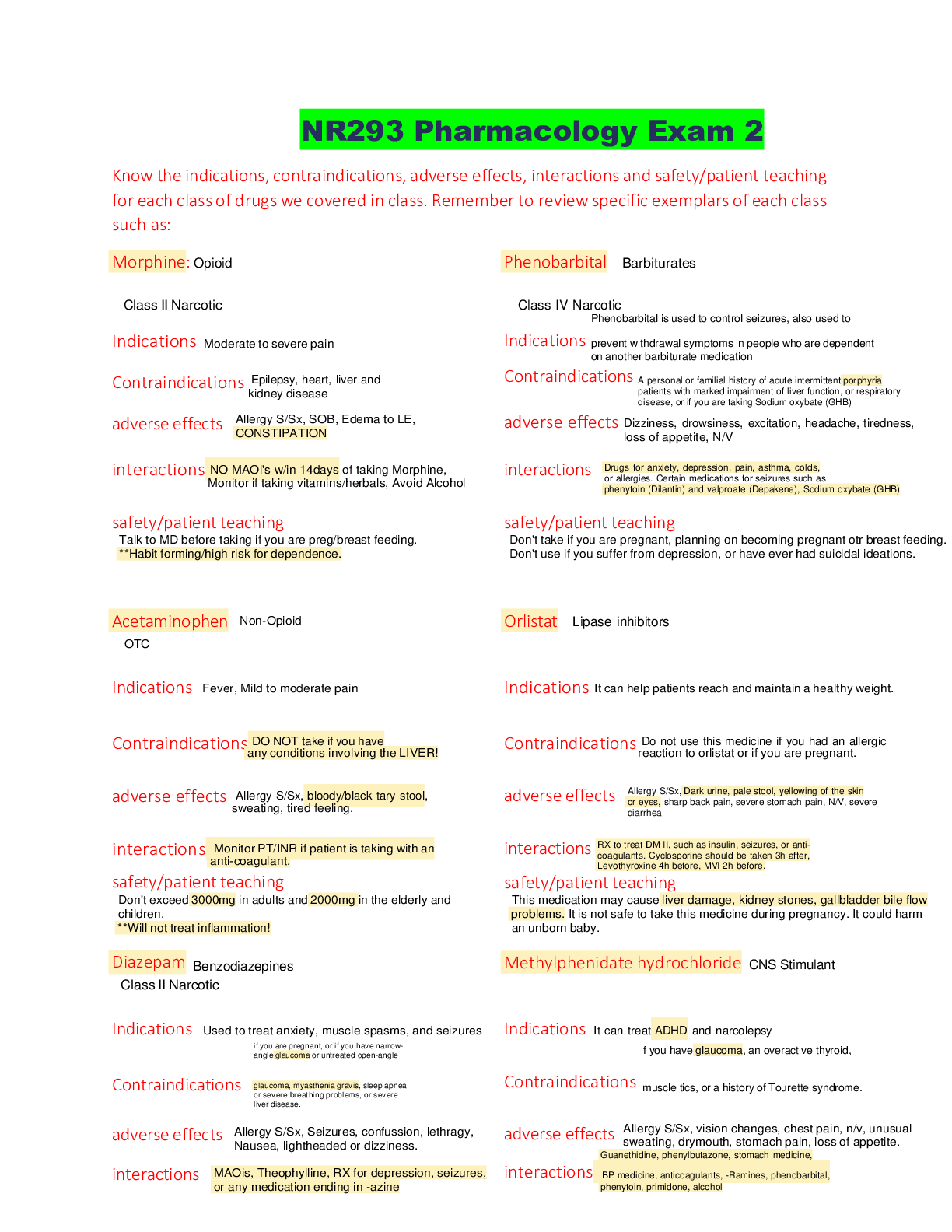
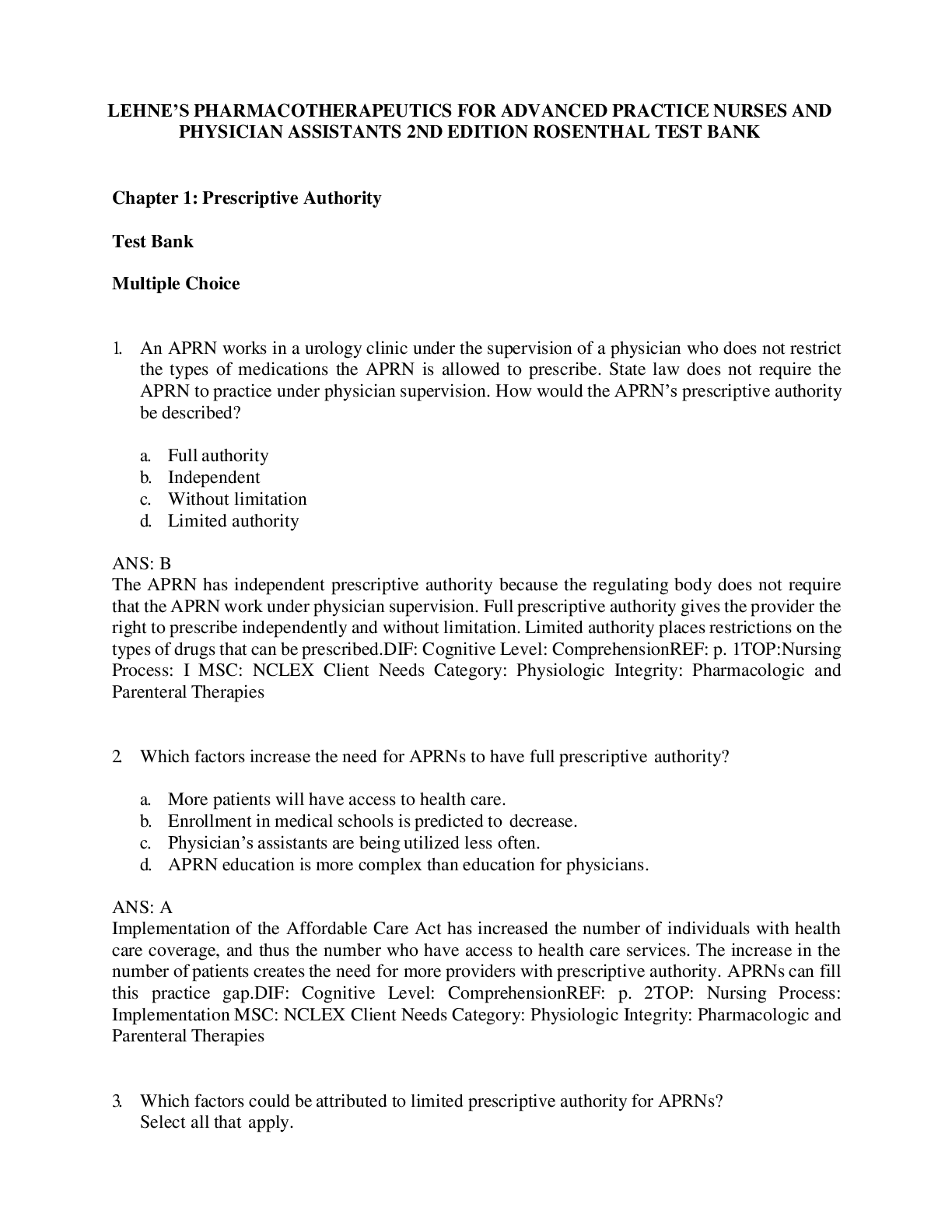



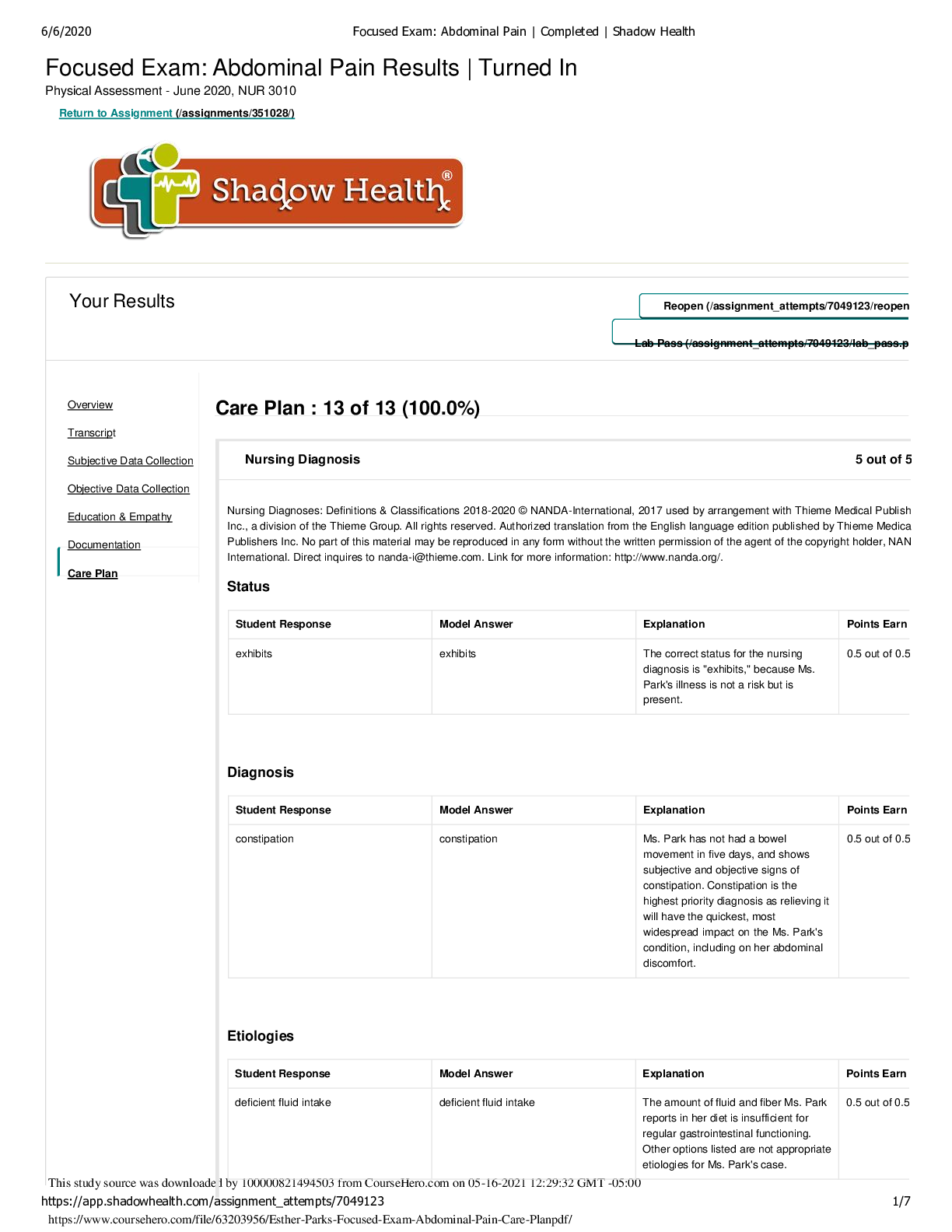

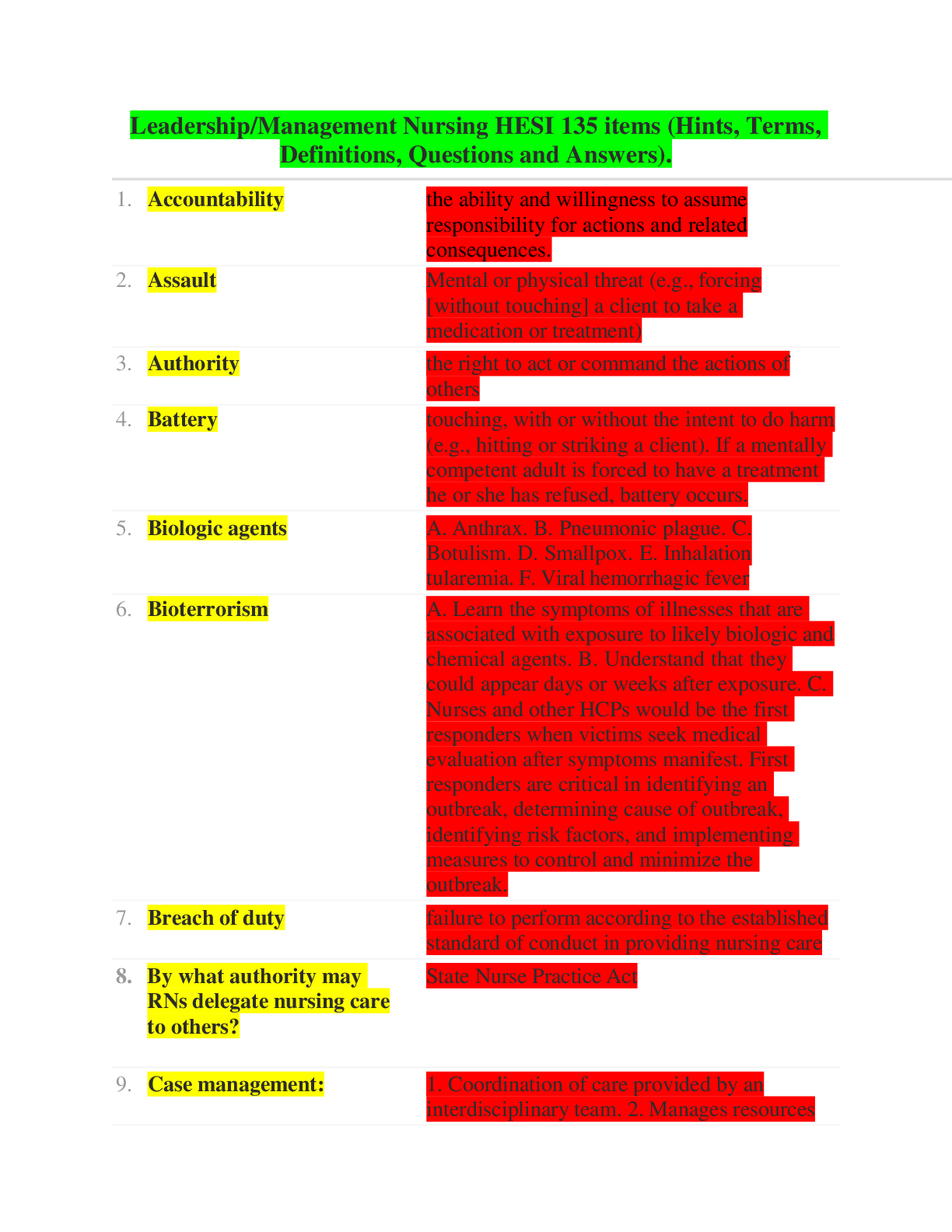
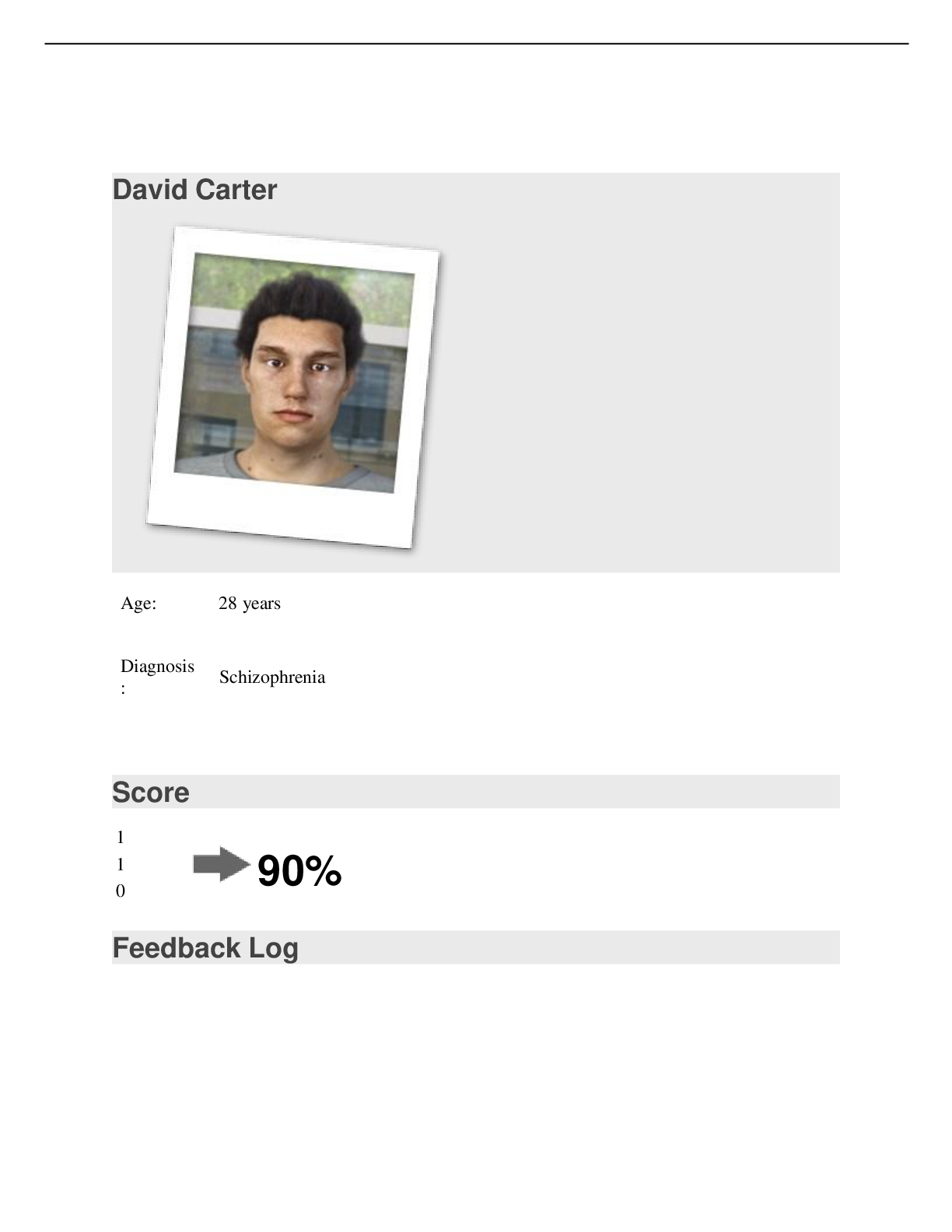
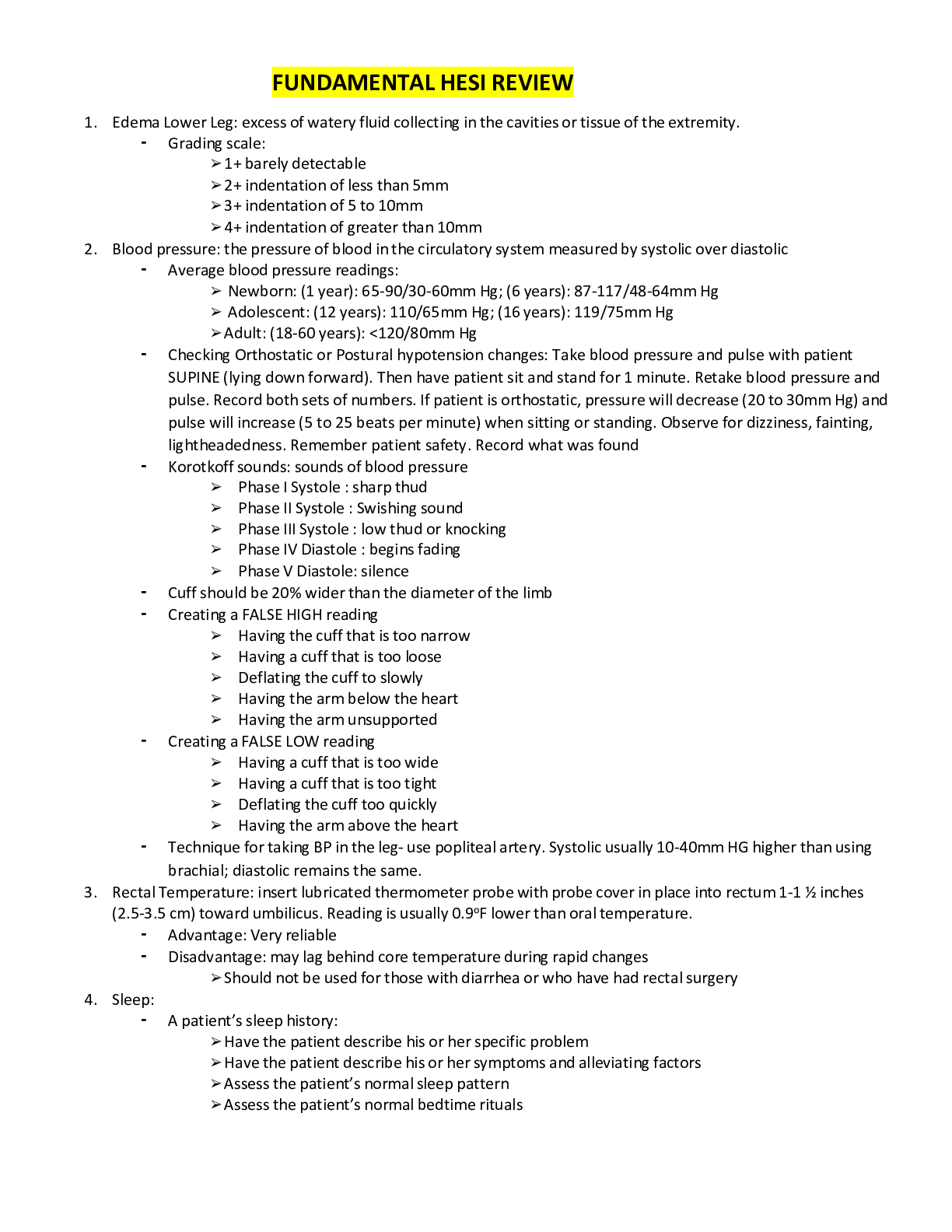
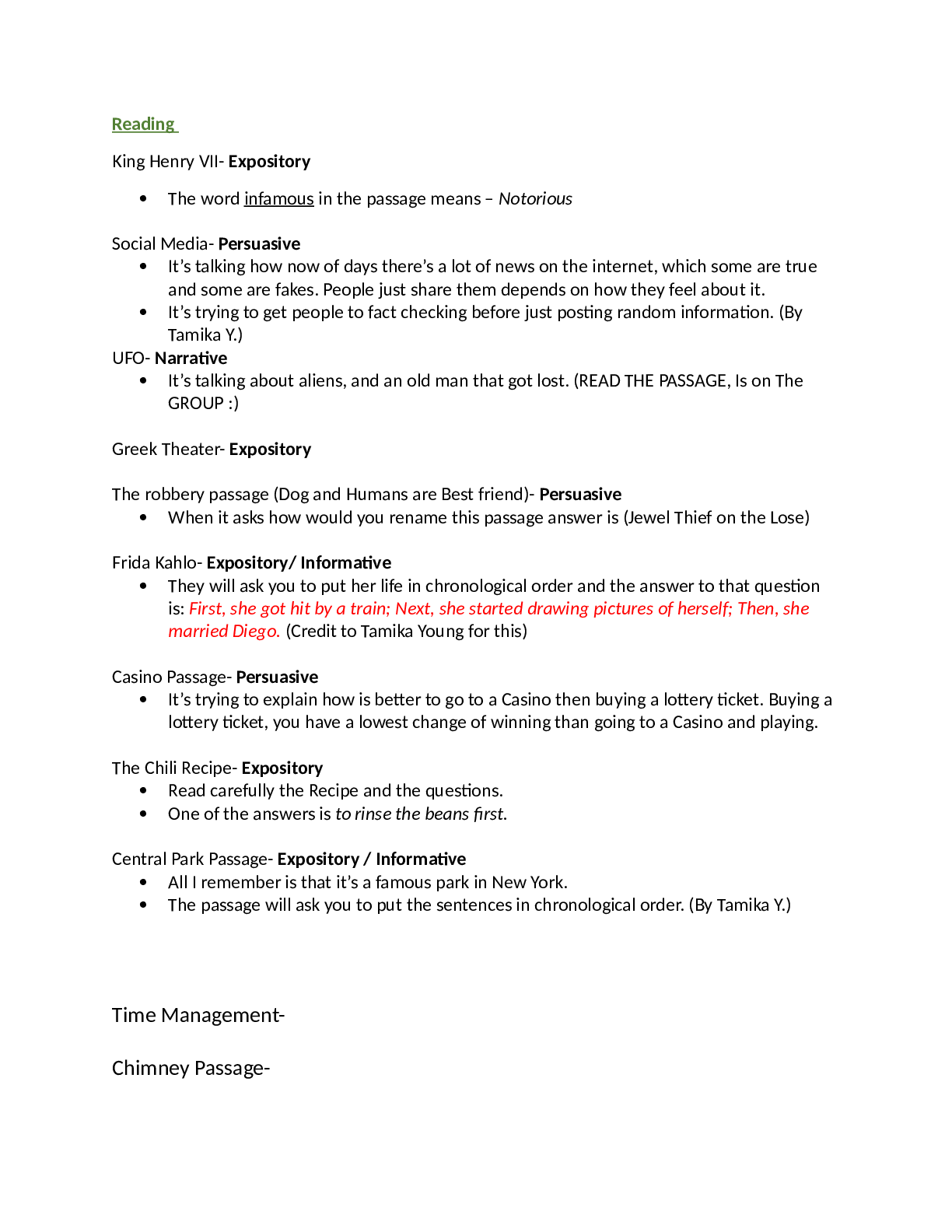


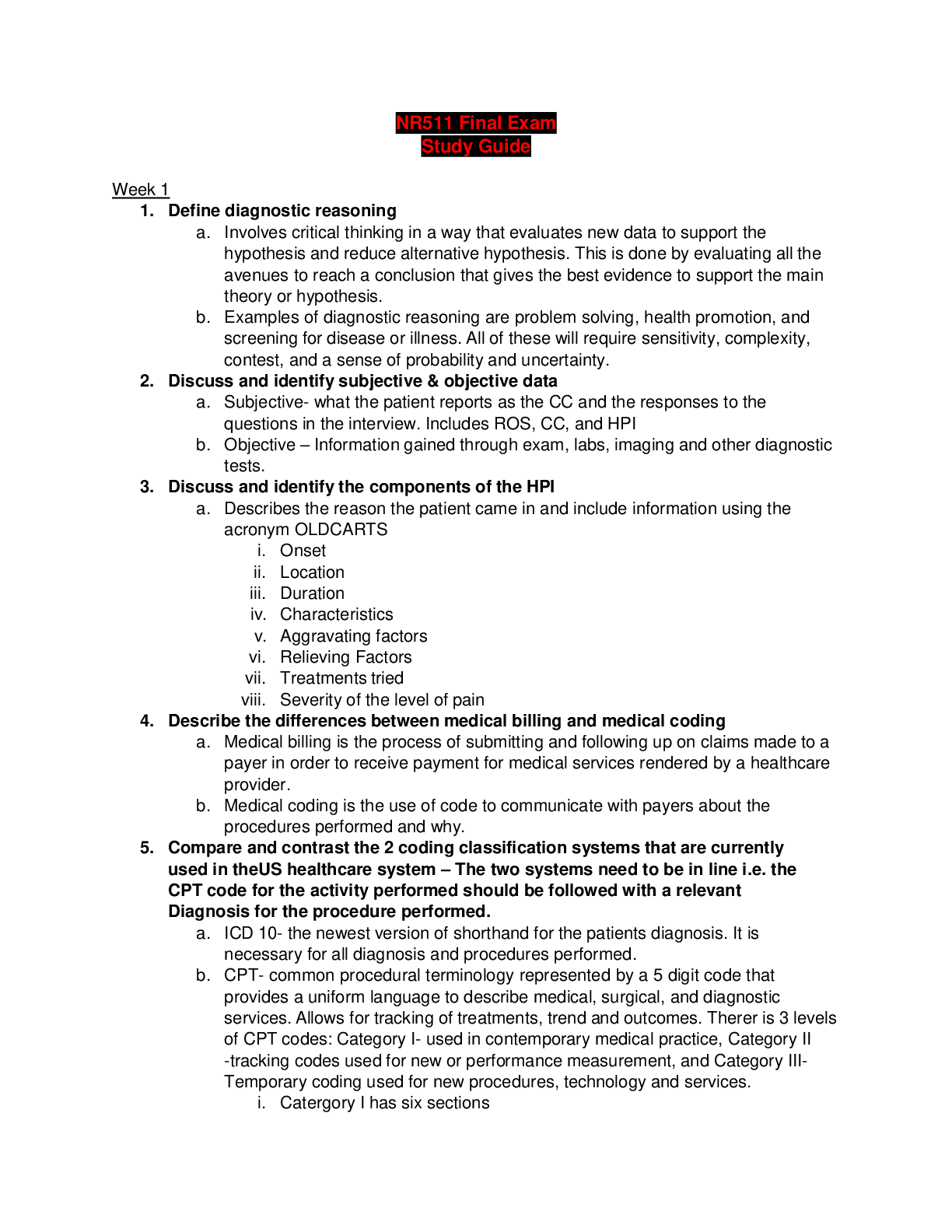



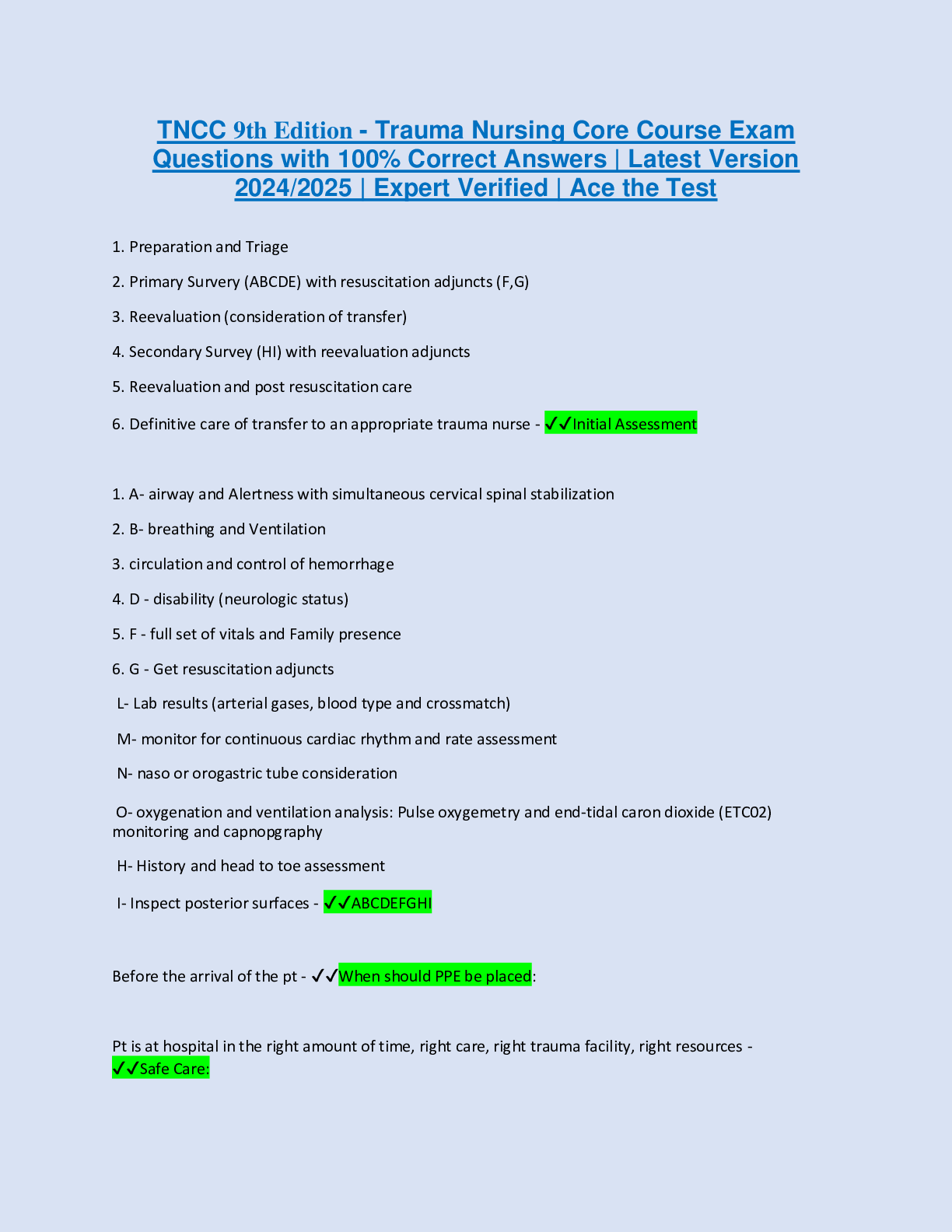








.png)

